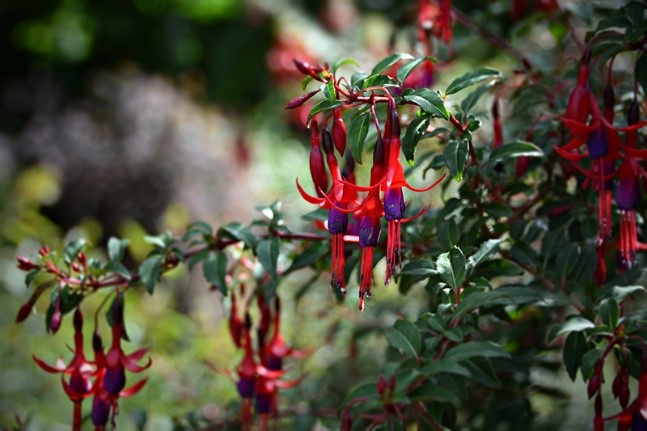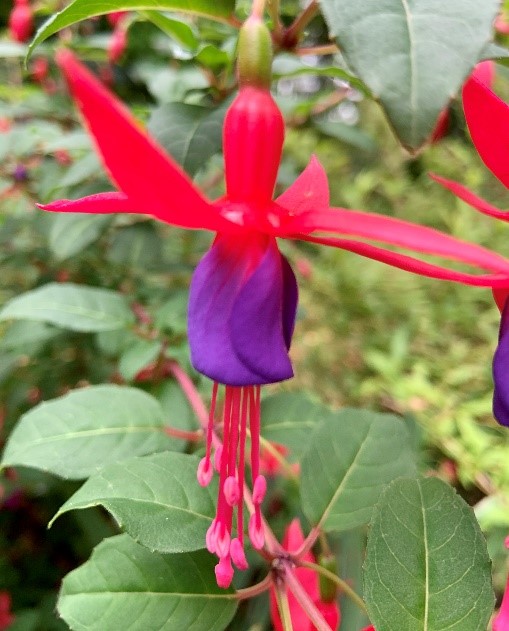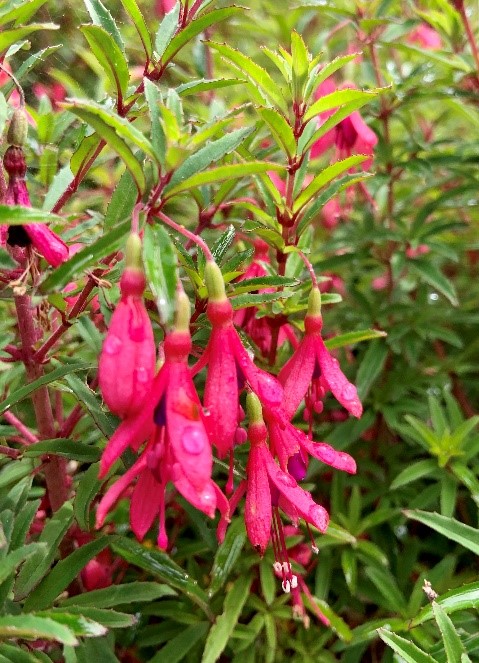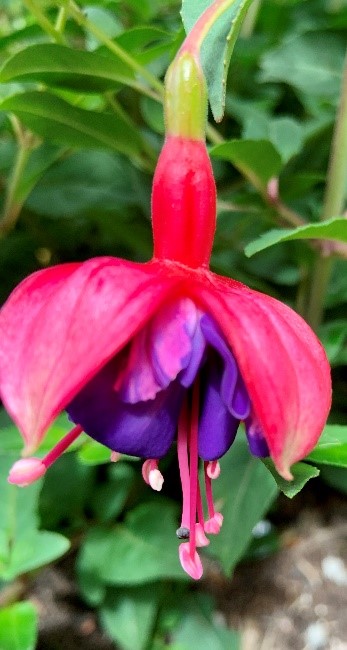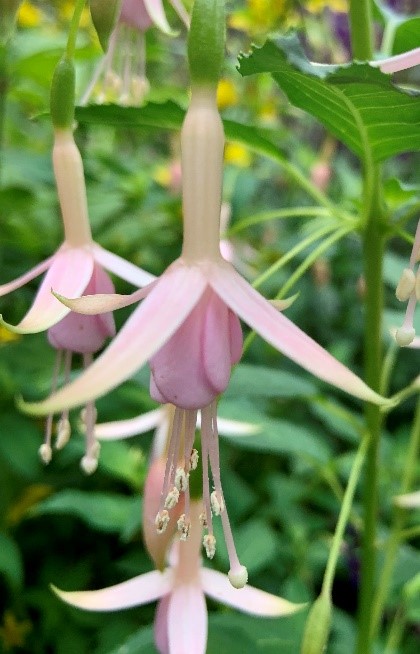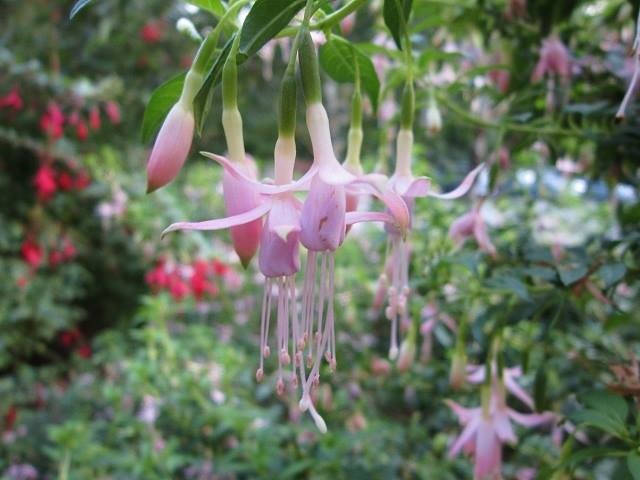Some say fuchsias are shrubs, some say perennials: we say they are both. There are almost 110 species of Fuchsia that are recognized; the vast majority are native to South America, with a few occurring north through Central America to Mexico, and also several from New Zealand to Tahiti. In these warm climates, Fuchsias grow as woody shrubs. In the Pacific Northwest, Fuchsias are grown as herbaceous perennials, although we have had an occasional winter where the Fuchsias have acted more like shrubs.
Taxonomists have arranged the almost 110 species of fuchsia into 12 sections based on native area and plant characteristics. The variety in the species is fascinating. Some grow in the northern part of South America, Central America and Mexico and like warmth. They have long tubes, some up to 4”, and often are shades of orange. Others, with red sepals longer than their tubes and purple corollas, are winter hardy in the Pacific Northwest and have parented many hardy hybrids.
What exactly is a hybrid? A hybrid is the offspring of two plants of different species. Hybrids are often created by humans to produce improved plants that have some of the characteristics of each of the parent species.
The Lake Wilderness Arboretum’s Perennial Garden has a handful of different species of Fuchsias along with a large assortment of hardy fuchsia hybrids. The garden is alive with blooming fuchsias all summer and fall until frost. Hardy fuchsias (hybrids) grow best and will flower more in full sun, although light or open shade is okay. In the spring watch for the new leaves to emerge and cut back any deadwood. If the winter was particularly cold, this may mean cutting the branches from the previous year to the ground. In the fall when the frosts have started, do not prune back the branches (except to neaten things up a little), the stems do help protect them from the cold.
The NW Fuchsia Society has an excellent website with great information about different hybrids and care.
Another wonderful thing about the fuchsias in the garden is that they create a hummingbird heaven.

